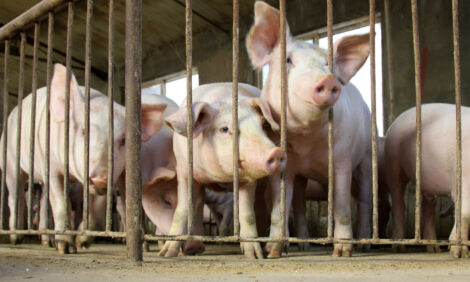



Weekly Purcell Report
US - Agricultural US Commodity Market Report by Wayne D. Purcell, Agricultural and Applied Economics, Virginia Tech.
 Weekly Purcell
Agricultural Commodity Market Report Wayne D. Purcell Agricultural and Applied Economics Virginia Tech |
LEAN HOGS on the Chicago FEB’06LH contract closed up $0.20/cwt at $64.675 in a late rush. The APR’06LH was up $0.75/cwt at $68.80/cwt. Futures were supported by steady cash prices. Rolling by the large funds was somewhat offset by clearing of some bearish spreads. Advances were subdued by the premium of futures to the CME lean hog index and declining pork cutout prices. The latest CME lean hog index was down $0.19/cwt at $58.48/cwt. Hedgers should be short in FEB’06LH and MAY’06LH futures protecting a portion of 1st and 2nd quarter marketings. Cash sellers should keep marketings current.
CORN at the Chicago Board of Trade (CBOT) continued lower today with the MAR’06 closing down by 3.2¢/bu at $2.11/bu. The DEC’06 futures were down 2.4¢/bu at $2.45/bu. Trading remained above the contract low of $1.99/bu established on 12/9/0. Rain forecast for the weekend in the Argentina pressured prices already influenced by sharply leaking soybean prices. Some rolling out of March into the May and July contracts was noticed as earlier-than-normal. With no new fundamental news and the USDA supply/demand report due out Thursday, the market ran slow as traders leveled positions. Wary of slow export numbers markets are getting ready for lower changes in soybean and corn use estimates. The funds increased their long positions by over 1000 contracts with shorts declining over 19,000. Some analysts have lowered their crop estimates by 300 million bushels over the weekend saying U.S. farmers would grow 10.723 billion bushels in 06/07. All the front contracts through the DEC ’06 futures gapped sharply lower on Monday possibly signaling an anticipated top. Although Midwest farmers sales were slow amid basis offering no incentives to sell, many corn producers on the East Coast were selling briskly for more attractive cash offerings. All ’05 crop sales should be completed. Hedgers should sit tight on short positions established on the ’06 crop while remaining vigilant for opportunities on the ’07 crop.
SOYBEANS, What a difference two weeks can make! By noon, the JAN’06 bean futures were down 17¢/bu at $5.834/bu chasing the MAR’06 slide of 16.4¢/bu at $5.944/bu. The JAN’06 closed down 16.4¢/bu at $5.84/bu and the MAR’06 down 17¢/bu at $5.94/bu. After opening sharply off Friday’s close of $6.334/bu, the NOV settled even lower 14¢/bu cents at $6.194/bu at the end of the day. World market fundamentals with that large “downside opportunity“ talked about in the last report finally made an appearance. After gapping up 3 weeks ago, the market wiped out any gains in the market on carry-over technical selling from last Friday’s close generally viewed as weak. Moisture for the South American crops weighed heavily on price amid lower than expected exports. Cash bids for soybeans in the Midwest were steady to firm with producers slow to liquidate stocks. While Brazil’s 05/06 crop were reduced 43 million bushels to 3.057 BILLION bushels all that grain was still a millstone on the neck of the market. The CFTC said last Friday that the funds lengthened their net long positions. Both the 4-day moving average and the RSI for the NOV’06 contract indicate a bearish move. Cash sales on the entire ’05 crop should have been completed by now with 20% – 25% of the ’06 crop forward priced. Hedgers should be aggressively short on up to 35% of next year’s crop in the NOV’06 bean contract.
WHEAT futures were lower with Kansas City contracts leading the way after reports of large net-long positions were cut. Chicago wheat lost buoyancy pressured by speculator sales and good rain forecasts for the Argentine bean crop. JULY’06 Wheat closed down 3.6¢/bu at $3.462/bu. Despite increased export inspections from a week ago the market was seen as still feeling the pain from Egypt’s snubbing U.S. wheat for Russian and Australian wheat. Wheat futures were down in all the markets. Higher-than-normal temperatures and dry weather stressed the U.S. winter wheat crop; especially in Oklahoma and Texas were brush fires and lack of rain contributed to crop losses. The ’05 crop has been sold for some time now. Hedgers should consider forward pricing up to 25% of the ’06 crop in the JULY’0 Wheat futures.








